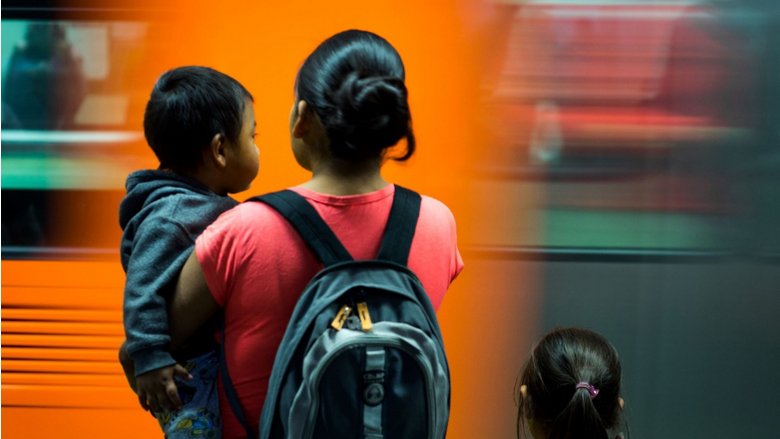Gender and Transport: Why does it matter?
Women and men have different mobility patterns and experience different risks when using public transport. Data from the ground consistently shows that the barriers affecting people’s mobility—accessibility, availability, affordability, acceptability, safety and security—disproportionally impact women. This phenomenon is directly linked to the persistence of gender roles and gender stereotypes, which leads to structural inequalities in how women and men use their time, make decisions within the household, and distribute everyday responsibilities.
Lack of adequate transport often translates into girls missing school, women limiting themselves to job opportunities closer to home, unemployment, and the inability to access health or childcare services. If women had full equality with men in choosing and using transport, they would have more control over their life choices. Enhancing women’s mobility could also have a transformative impact on the global economy through increased labor force participation. A McKinsey report notes that if women had an identical role to men in labor markets, global annual GDP could rise by as much as $28 trillion, or 26 percent, by 2025. Addressing gender gaps in and through transport makes a crucial contribution to various United Nations’ Sustainable Development Goals and resonates with the underlying principle of the 2030 Sustainable Development Agenda: “No one must be left behind.”
Improving public transport will also have implications for the environment and transport decarbonization. In most countries, women tend to be more reliant on public transport and walking than men (more out of necessity than choice), who make more trips by car or motorcycle. Making public transport more efficient, affordable, convenient, and safe not only reinforces women’s use of low-carbon transport options but can also influence more men to shift their patterns away from private, gas-powered vehicles. Our vision is for everyone to opt for sustainable transport, not only because it’s the right thing to do, but because it is truly the better option.
Women also face more difficulties getting jobs and climbing the career ladder in the transport sector. They comprise less than 20 percent of the global workforce in transport and storage. The roles that women take are mainly concentrated in administration, sales, and catering, which tend to be the lowest-paid positions. There are fewer females than males employed as engineers, drivers, and managers in the sector. Poor working conditions, such as lack of access to sanitary and break facilities, lack of flexible work shifts, and violence, harassment, and discrimination, are some of the many barriers that women face to entering and staying in the sector. As a result, the planning, design, and operations of transport infrastructure and services often do not reflect women’s voices and needs as transport users.
World Bank Approach
The Thematic Note on Closing Gender Gaps in Transport, which accompanies the World Bank’s proposed new 2024-30 gender strategy, points out that there is an urgent need for holistic policies that tackle women’s mobility barriers.
There are many concrete solutions that can help enhance women’s mobility. Governments could prioritize road work near schools and hospitals and plan transport hubs accessible to daycare centers. Transport subsidies could be included in cash transfer programs for low-income women.
Collaborating with universities and transport agencies could open more internships and jobs for women in Science, Technology, Engineering, and Math (STEM) fields. These interventions require collaboration with non-transport entities, such as the ministries of Social Protection, Women, Youth, Health, and Education, as well as education institutions and businesses.
Civil society support is also crucial for changes in mindsets and behaviors toward women’s transport use.
The World Bank Group is putting these approaches into practice to help improve women’s and girls’ mobility and employment. For example:
- In Azerbaijan, the government repealed 674 job restrictions on women’s employment, working with the World Bank to show that these roles—many of which were in the transport sector—posed no specific threats to women’s health.
- In Egypt, through its transport and logistics project, the World Bank is working with the Egyptian National Railways to reinstate their in-house childcare center.
- In Mozambique, half of all women ages 15–34 say that distance limits their access to health care. The World Bank-supported projects are improving feeder roads and piloting solutions on gender responsive transport services to increase accessibility of local population to essential services.
- In Pakistan, a project is improving safety and access to schools, health facilities, and markets in the Khyber Pakhtunkhwa province through road upgrades and subsidized transport for girls from marginalized communities.
- In Quito, Ecuador, 91% of women report harassment in public spaces. A project to expand public transit includes new communications systems to report harassment. Gender sensitivity training was also introduced to transit staff.
- In Tonga, the Word Bank’s Climate Resilient Transport Project is looking to create more opportunities for women in commercial driving by helping them obtain commercial driver licenses through a customized training and accreditation program.
The World Bank leads global discussions on gender and transport through events and outreach, research on critical gender gaps and partnerships with other development agencies, governments, private sector, and the civil society.
Global and Regional Publications
Global Publications
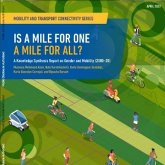
The broad objectives of this study were to identify the (1) Mobility differences globally between genders; (2) Outcomes for their mobility barriers and opportunities to access education, employment, health, social services, and leisure and recreation services, and (3) Policy lessons and future research needs for optimizing access to transport for women and other transport-disadvantaged groups. This report was funded by the Human Rights Umbrella Trust Fund.
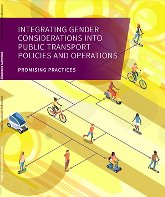
The World Bank, in collaboration with the International Association of Public Transport (UITP), identified 10 case studies showing how national and municipal authorities worldwide have been integrating gender into the design, management, and operations of their systems over the last 20 years. This report was funded by the Human Rights Umbrella Trust Fund.
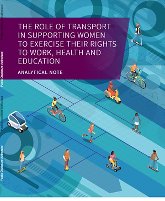
The study articulates how international human rights instruments and standards invoke transport and infrastructure while discussing accessibility to the rights to health, education, and work and how an HRBA to transport would look as a planning tool. This report was funded by the Human Rights Umbrella Trust Fund.
Regional Publications
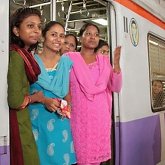
This paper examines the effect of the spatial accessibility, availability, and safety of public transportation on women’s labor market outcomes in three capital cities in the Middle East and North Africa—Amman in Jordan, Beirut in Lebanon, and Cairo in the Arab Republic of Egypt. The analysis uses three types of data collected for each city in 2022: household mobility surveys, transit network data, and built environment audits. The paper investigates how the spatial accessibility of jobs in each city, the availability of public transportation close to residential locations, and the safety of public transit stops affect the labor force participation of women and their likelihood of employment.
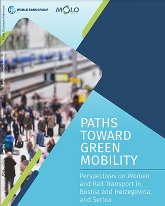
This report explores mobility and employment in the transport sector - in Serbia and Bosnia and Herzegovina from a gender perspective. It highlights the urgency of transport decarbonization for the Western Balkan countries (WB6) in the context of the European Union’s Green Deal, which aims to achieve net zero greenhouse gas (GHG) emissions by 2050. This report shows that COVID-19 has decimated rail transport use at a time when global and WB6 regional efforts must dramatically increase their movement toward decarbonization.
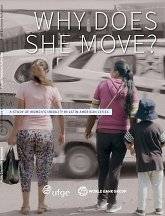
This study explores the constraints to women’s mobility and access to economic opportunities in six low-income areas of urban Latin America through the lens of agency.
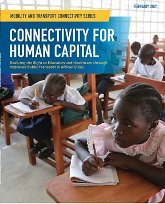
Despite having made tremendous progress in ensuring equal access to education and healthcare for its people, with school enrollment rates rising and children in most countries receiving the recommended preventative care, many countries in Sub-Saharan Africa (SSA) remain at the bottom of the World Bank’s Human Capital Index and the United Nations (UN) Human Development Index.
Learners’ corner

The course was jointly prepared by the World Bank Transport Global Practice and Open Learning Campus (OLC), and the UN Women’s Training Centre, and the Safe Cities and Safe Public Spaces Global Initiative. The course provides an understanding of the often-invisible gender aspects surrounding mobility in the transport sector that make the sector “gender-blind” and, therefore, unable to consider the mobility needs of its diverse range of users, specifically women and girls. It also looks at difficulties women face in getting jobs and climbing the career ladder in the transport sector—a sector dominated by a male workforce. Notably, the course shares concrete solutions to support the shift towards greater gender equality in the industry. This is the first solid e-learning course publicly available on this topic and enjoyed good external traction.
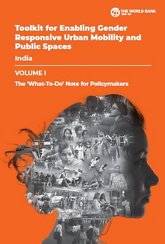
Globally, lack of consideration for diverse population needs in urban planning and design has constrained women’s access to socioeconomic opportunities. Indian cities need gender-responsive urban mobility and public spaces so that the benefits of city-led economic growth can be more equitably distributed. This toolkit is intended to bridge the knowledge gaps between policymaking and program implementation for India's gender-responsive urban mobility and public space. While central and state governments are committed to the goals of gender equality and women’s empowerment, they often need more practical tools and knowledge of how to translate their intentions into actions and to formulate programs to meet such policy objectives. This toolkit is intended to be a practice guide towards introducing gender equality and women’s empowerment principles in designing urban mobility systems and public spaces so that they mitigate rather than reinforce gender inequalities. The toolkit is divided into two volumes, with the first volume focused on high-level guidance for policymakers, while the second provides a ‘How-to’ guide including practical tools for implementing agencies.
Selected blogs and feature stories
She drives change: Breaking barriers for women in transport
Public transport is key to strengthening women’s economic participation in MENA
Making Way for Women in Transport and Logistics: Promising Practices in Europe and Central Asia
The Climate Action Agenda: Why a people-centered approach to mobility matters
Filling in knowledge gaps on gender equality in transportation
Inclusive transport will be critical to women’s empowerment—and to development as a whole
